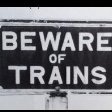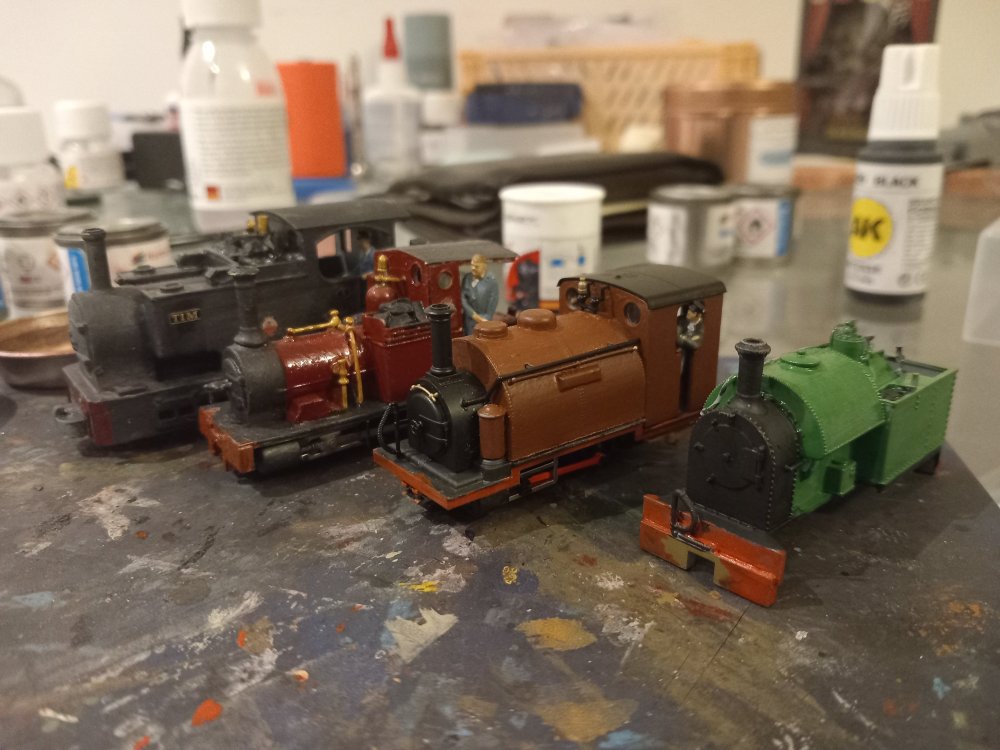-
Posts
340 -
Joined
-
Last visited
-
Days Won
4
DoctorPan last won the day on August 30 2022
DoctorPan had the most liked content!
Recent Profile Visitors
DoctorPan's Achievements
-
DoctorPan started following Further 22000 nonsense , Locomotive 131 on "Sea Breeze" , Ballycar floods again and 4 others
-

Locomotive 131 on "Sea Breeze"
DoctorPan replied to Rush and Lusk's topic in What's happening on the network?
Currently at Wicklow being towed home by 082 -
That's not the findings of the hydrolocial engineers that wrote the 2020 RPS as Ballycar Lough and the surrounding loughs contribute to flooding in the region and to solve one, you need to solve the other.
-
The proposed solution is a full flood relief scheme and drainage design for the region. Rasing the embankment only kicks the can down the road and leaves it open to flooding during 1 in 100 year floods, which is no bueno these days.
-

Dublin Airport Rail Connectivity
DoctorPan replied to 226 Abhann na Suire's topic in What's happening on the network?
Indeed that is the rationale behind how DART+ and Bus Connects programmes are being ran, DART+ is spilt up between West (covering Maynooth and M3 Parkway electrification), South West (Hazelhatch and PPT), Coastal North (Drogheda), Coastal South (Southern line upgrades), BEMU (installation of charging equipment at Drogheda to allow the first batch of the new fleet to start operating in advance of infrastructure), Depot (the new depot at Kilcock), Underground (which will commence once the rest of the DART+ programme is complete) and Fleet, (the 750 new EMU fleet). Bus Connects is spilt between the network changes and corrdior upgrades, of which the corridors are spilit into 11 independenant corridors. What means is that items that would be conterversial (i.e Merrion Gates) won't derail the entire project upgrades and each project helps the others along. The EMUs are coming so the depot needs to be done and the depot needs the corridor electrified so West needs to be done. The last thing politicians want is the uncomfortable sight of brand new trains sitting up unable to be used. The current drive is giving the network upgrades that should have happened over the last 40 years, expansion of electrification, expansion of the commuter services in Dublin, Cork, Galway and Limerick, new signalling role outs, northern line quad tracking, closure of level crossings, Ennis line capacity upgrades. These are all upgrades that need to be done before we look at expanding the network as it stands currently, it can't handle what is expected of it now, let alone provide any expansions. I would err against empowering local authorities against transportation. The likes of Maxoil Flynn, Lacey, Galway and Cork City councils are clear examples of talking both sides of their mouths but will come down against any changes to the car status quo. The NTA has been the game changer from an industry POV. It's not prefect but now independent body to the likes of Dublin Bus, Irish Rail and the Councils has been driving change in public transport and slowly dragging Ireland into the 21st century. -
This year.
-

Dublin Airport Rail Connectivity
DoctorPan replied to 226 Abhann na Suire's topic in What's happening on the network?
I'm not NTA but I am an engineer who has worked on the projects in some form of designer, manager and safety assurance roles. This spur was considered and rejected and is all the more surprising that the normally well informed Jim Meade has gone off the reservation so to speak. His comments came as news to the staff of IÉ's Capital Investment Division including comments on other sections of the network projects of which I'm currently working on. 1. Post DART+ world, Clongriffen is going to be the one of the two passing points for the Enterprise between Connolly and Drogheda, an important asset where all other trains are going to be all station DART stoppers. Land take is not available at Clongriffen, as development is currently ongoing or is planned either side of the IÉ land boundary making provision of land, plus Clongriffen is to a terminal point for some DART services so usage of all four platforms are already allocated. To introduce an airport shuttle would introduce operational moves that would result in conflicts of crossing the main lines some of time, impacting journey times and service frequency as the corridor between the city and Clongriffen is going to see 11 trains per hour per direction of DART services not including the proposed hourly Belfasts. 2. Opertionally it makes no sense to stop the Enterprise in its current format at Clongriffen, it is too slow to accelerate from station stops and with such a high freqency of service planned however the new Enterprise fleet with the inital specs of being bi/tri-modal may have the acceleration profile to match a DART's profile, again also it is accepted best practice internationally that either passengers could change at Drogheda to a DART or travel from Connolly on a DART service. 3. It is easier to travel to Tara St but human factors modelling shows that if people won't think of that and instead heads towards the nearer access point which 'feels' like its Connolly. I should also mention that the plan for Connolly under DART+ is the introduction of street side access to Platforms 5, 6 & 7 at Preston Street. But to answer your question, the metro would be far quicker than a DART to the airport and a far higher frequency. The metrits of a ped overpass at that location would not fall under IÉ or NTA's remit but DCC as I recall. 4. It does depend on the public's preception but a transfer at Tara St is more seemless than a connection at Clongriffen, as people prefer to transfer to a model of transport with a higher frequency as it feels like a 'safer' connection. 5. Far less time then waiting for a spur from Clongriffen. Metro is currently at the oral hearing phase of the Railway Order process, having undergone preliaminary and detailed design, public consultations and construction planning, as well as site invesitgations, subject to Railway Order approval by APB, the project is shovel ready. The spur to Clongriffen hasn't done any of that proccess or indeed other proccess like EIAR and such. 6. As part of the DART + South West programme. A seperate but parrellel project is the provision of additional stations at Cabra and Kylemore, of which is currently in Phase 1 Optioneering. It serves passengers from south who arrive into Heuston by providing a connection to the DART network, including Glasnevin where the interchange with the Metro is without having to use Luas and avoid the city centre should they wish to or they could change at Hazelhatch for a DART service. It is a joined up system by providing connections and interlinks between the two sides of the network, even with the construction of a Clongriffen spur, it does not improve the connections at the Heuston side of the network as it is not opertionally practical nor desired by IÉ to operate a spilt frequency terminus on the south west and west services between Connolly and Heuston. 7. What infrastructure I would consider required for a spur to the airport? Delivery of DART + infrastructure programme, DART underground and Quad North plus additional order of EMU units in addition to the 750 units coming as part of DART+. Indeed it should be noted that the All Ireland Rail Review considered such a spur as a long term possible goal but preferred the provision of connectivity to a brand new corrdior to Drogheda but notes that these interventions are long term and only supplementary to Metro. The industry is flat out and we cannot increase capacity fast enough, either in terms of outsider designers or internal staff within IÉ or NTA. There is a large number of projects going at the moment that is sucking up all capacity. There's 4 DART infrastructure projects, DART expansion to Wicklow, Navan Line Reopening, there's the Cork Commuter Area projects, the atforementioned new stations plus new ones at Moyross and Ballysimon, Foynes line, rollout of IÉ's new signalling system, Galway region capacity improvements, Limerick - Limerick Junction doubling and Ennis Line Capacity Improvements and that's just IÉ projects. Metro is the big one outside of heavy rail but the various Bus Connects projects are also resourse heavy from the NTA and planning authorities. It comes down to decades of under investiment into our infrastructure and needing to do a lot of 'basic' upgrades to unlock the capacity for expansion and improvements. -

Dublin Airport Rail Connectivity
DoctorPan replied to 226 Abhann na Suire's topic in What's happening on the network?
These benefits do not stack up and indeed would result in a worse service for the existing infrastructure. Indeed the construction of a spur could result in a worse service for the Northen line as it would remove one of the passing loops before Droghea, an important asset in a post DART + world. 1. The entire population would have a rail connection to the airport with the metro. Secondly the metro would provide a far higher frequency of service to those people than what a spur from Clongriffen could provide. 2. People travelling from all points north of Drogheda would have to do the same as if the metro was built, having to change at Droghea for a DART and then again at Clongriffen, indeed it would be faster to travel to the airport via Tara Street. 3. Busaras would be connected through a short hop on the DART to Tara Street or Glasnevin. Improved pedestrian access between Connolly and Busaras is needed but that falls outside the scope of both a spur and Metro conversions. 4. People on the Wexford line would still have to change trains at some stage, it would be far quicker to change at Tara St to the Metro than continue all the way up the Northern line. 5. Again the people on the Sligo line would have a quicker and more frequent connection through Glasnevin, especially in a post DART world where Spencer Dock will be a more frequently used terminus. 6. Heuston is getting a new additional station, Heuston West on the site of the old platform 11 as a connection to the DART + network, travellers from all points west could either change at Hazelhatch to the DART or walk from the concourse and get a DART from West or indeed take the Luas into the city centre and connect to the Metro there. They compliment each other but only if they are done in the right order and the spur requires a lot of additional supporting infrastructure to achieve it, the Northern line does not have the capacity to be the sole rail connection to the airport. Ironically I would say it would be far easier and better for the wider intergrated transport network of Dublin and Ireland that the metro be extended very shortly after opening to connect up with the northern line at Rush and Lusk or some other station than the spur from Clongriffen. -

Dublin Airport Rail Connectivity
DoctorPan replied to 226 Abhann na Suire's topic in What's happening on the network?
Its a lot less sinster, the TBM and metro has minimum radius curves in order to fit in Tara Street and Stephens Green stops, it pushed the station up O'Connell Street. 500m is not an ideal transfer distance but there are stations within the London Underground that have walking connections of that length. A spur from Clongriffen is not an easy, quick or better solution than Metro, indeed I'm highly surprised by Jim's comments on the speed of construction as that is not what my colleagues have briefed Irish Rail and the NTA on it. The spur is feasabile yes, but not until Metro is in operation and QuadNorth project is carried out, otherwise what will happen is we will build the spur, certain members of the public will claim that since the airport has a rail connection there's no need for Metro and it will be cancelled, leaving us with a terrible frequency and a worse off service than before. -

Dublin Airport Rail Connectivity
DoctorPan replied to 226 Abhann na Suire's topic in What's happening on the network?
Metro will give you nearly all that, 20 mins journey time between O'Connell Street and Dublin Airport with a max frequency of 90s between trains. That level of operation and capacity is not achievable on a heavy rail scheme. -

Dublin Airport Rail Connectivity
DoctorPan replied to 226 Abhann na Suire's topic in What's happening on the network?
Why in the name of god would we build a new rail system to a non standard gauge when instead we can build it to international standards and allow off the shelf rolling stock to be purchased instead of having to go for bespoke solutions all the time and allow the future upgrade of the Green line south of SSG to metro running as originally intended. Clongriffen spur is not an easy or cheap solution but is a poor substitue for a metro. At most its a 30 min frequency or its a change at Clongriffen onto very heavy loaded services, but appearently that sort of changes is ok but Intercity to DART to Metro isn't? Plus the spur does not provide the main benefits of Metro, which is a public transport corridor with a consistent travel time between North Dublin and the city centre, serving the airport is just a bonus to the scheme. Transfers between different services and types is common elsewhere in the world but for some reason any suggestion of that here in Ireland produces some mighty nashing of teeth and comparision in some corners to Todd Andrews and the UTA. -

LNERW1 Starts Arguments-Episode II: The Thomas Menace
DoctorPan replied to LNERW1's topic in General Chat
I think the original models used were G scale, with 0 gauge for the narrow gauge engines. Awdry's writings were a great introduction to the world of railways and he always strived to ensure technical accuracy to his stories. From a modelling POV, reading the depth of history he wrote for Sodor is appladable and appeals for the modeller wanting to do something a little different. The MSR a mashup of Corris, Ffess and WHR practices, what's not to love? -

MkIV Refurbishment
DoctorPan replied to 226 Abhann na Suire's topic in What's happening on the network?
You would be surprised at how endearing the BnT is in the eyes of the public as meaning poor train service. There's people who think the silver 201s are completely different locos to the the BnT 201s. The general public also for instant offen still move towards the front of the train for Portarlington despite the fact that the platform has been extended for decades at this stage. -

MkIV Refurbishment
DoctorPan replied to 226 Abhann na Suire's topic in What's happening on the network?
Working folk don't care about catering compared to seating and plug availability. I can't expense 1st class tickets and I could expense food as a per diem, there's far more appealing options then train catering, trolley or galley form. When I was commuting long distance my peers view was why would I want to eat on the train? I just want to get from A to B reliably. And from my peers and colleagues who still commute on the Cork line, they much prefer ending on the ICR diagrams than the MK4s ones even for the longer distance, the ICR better ride quality make for a far more attractive user experience. -

MkIV Refurbishment
DoctorPan replied to 226 Abhann na Suire's topic in What's happening on the network?
That colour scheme is toxic in the eyes of the public! -
What makes it nonsense?
.png.c363cdf5c3fb7955cd92a55eb6dbbae0.png)











